Are you looking for a small, American breed that can keep you safe while also being suitable for apartment living AND looking adorable? With such a huge array of Rat Terrier colors and their protective and feisty temperaments, there is something truly unique about these pups.
Speaking of colors, Rat Terriers are one of the most colorful dog breeds you can run into. These pups come in a wide array of colors and patterns according to both the American Kennel Club (AKC) and the Rat Terrier Club of America!
Here is a list of all possible Rat Terrier colors, as well as some cute pictures you can enjoy:
1. Black And White Rat Terrier

Look at this adorable black and white Rat Terrier!
White and black is one of the classic Rat Terrier color combinations, but this particular one isn’t as common as the white and black one.
This pup will have a black base coat with white markings spread randomly on their bodies, but most of them will be on a dog’s stomach, chest, and legs. White mask is possible but not too widespread. Badger markings are also acceptable.
2. Black, White, And Tan Rat Terrier

This is the first tricolor dog on our list, but it’s certainly not the last.
These doggies also have black bodies with white chests, stomachs, legs, and possibly a few other random white markings, but with tan markings, as well.
Tan spots are usually present on the pup’s cheeks and chest, although they might be located anywhere on the dog’s body.
Don’t you think these pups look a bit like Jack Russel Terriers?
3. Black, Tan, And White Rat Terrier
No, I am not just repeating myself. This isn’t the same dog as the black, white, and tan one.
The difference is that this pup has tan markings that are more widespread than the white ones. That’s it.
Believe it or not, this small difference is a huge deal according to kennel clubs, and these pups are classified as an entirely separate Rat Terrier color.
4. Blue, White, And Tan Rat Terrier

Blue, white, and tan Rat Terriers are, in fact, black, white, and tan doggies with a blue dilution gene.
This gene “dilutes” the black pigment in the dog’s body, turning it into a beautiful blueish-gray shade. Your dog won’t be Smurf blue, but you can certainly see that blue tint on the coat of the dog in the picture.
Not only will the dilution gene affect a pup’s coat color, but it will also turn its nose blue! The same goes for any visible skin part that would normally be black, such as eye rims and paw pads.
As the tan color isn’t affected by the dilution, the reddish markings will remain the same.
Blue is quite a common color in certain dog breeds, such as American Bullies. In Rat Terriers, however, it is quite rare.
It’s important to keep in mind that blue coats are connected with color dilution alopecia (CDA), a genetic condition that can lead to hair loss. Fortunately, CDA is extremely rare, so your blue, white, and tan Rat Terrier will likely be unaffected.
5. Red, White, And Sable Rat Terrier
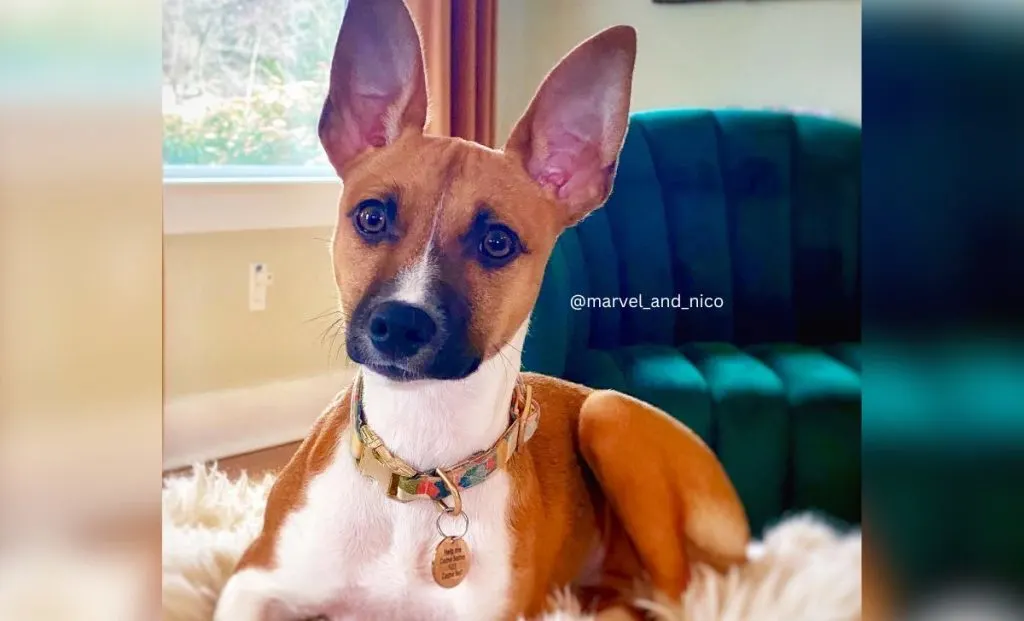
Red, white, and sable Rat Terrier can easily be confused with a white and tan Rat Terrier. The difference is that the tan portion of the dog’s coat has sable on it.
Sable is not exactly a color but rather a pattern or two-colored hair strands. A dog’s coat is sable when its hairs have a base color with black tips.
Sable cannot affect a white coat, so white markings are left unaffected, while the rest of the coat might look as if it has a black overlay.
6. White Rat Terrier

White is the only solid color accepted in this dog breed – although most of these pups have a few small spots of colors on their bodies.
No, these pups don’t suffer from canine albinism. Just look at their black noses and dark eyes! If a dog were white due to albinism, its nose would be pink, and its eyes would have a unique blue color with a red hue.
7. White And Apricot Rat Terrier
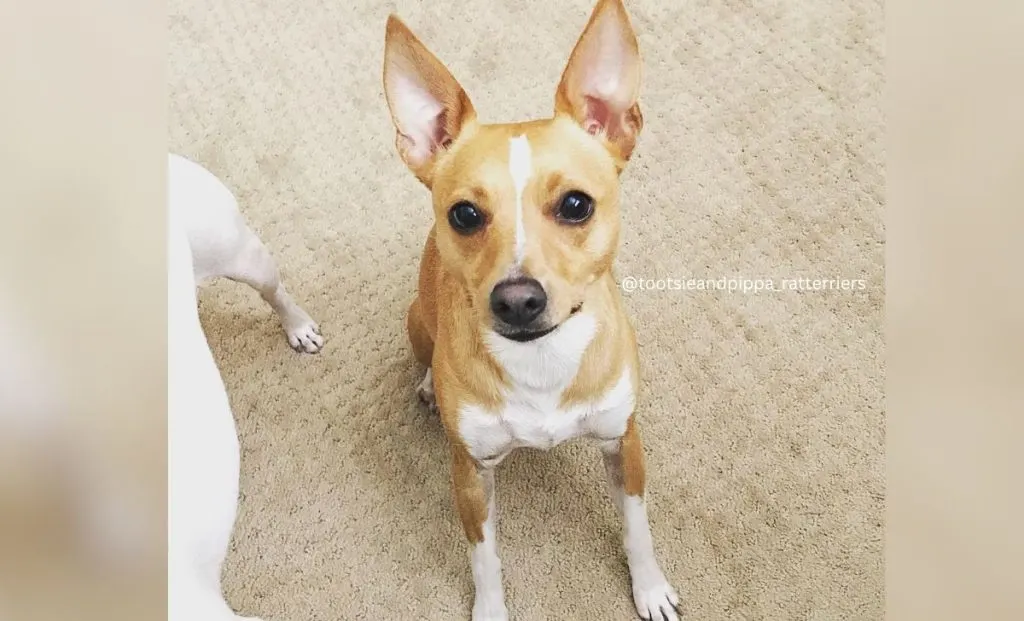
Apricot is a rather beautiful coat color that is fairly rare in the dog world but common in Rat Terriers.
These pups have gentle cream to ginger markings, while the white covers most of their bodies.
The apricot shade is the result of a dilution gene, meaning that the dog’s nose will be affected, as well. However, instead of becoming blue, an apricot Rat Terrier’s nose will become brown or liver in shade.
8. White And Black Rat Terrier

White and black Rat Terriers are bicolor dogs in which white hairs cover a large portion of a dog’s body, while black is spread on less than 50% of the coat.
This color distribution is the reason why this is considered a white and black dog, and not a black and white one.
Other than this, these pups are identical to the black and white Rat Terriers, and sometimes it can be challenging to differentiate between the two.
9. White, Black, And Tan Rat Terrier
Yes, this is another tricolor dog with the same color combination. However, while black, tan, and white pups had a white coat pattern, in these pups, white is the base color, and it goes over the largest part of a pup’s body.
Some white, black, and tan Rat Terriers have a black saddle, one that is a pretty common Beagle marking. However, black is almost always taking up more space than tan.
10. White And Blue Rat Terrier

Look at this cute little face!
These are, in fact, white and black Rat Terriers, but with a blue dilution gene that has turned black coat markings into blue.
Despite the blue color being accepted in the Rat Terrier breed, it is still quite rare, so the cost of these puppies can skyrocket.
11. White And Fawn Rat Terrier

Fawn is a light yellowish-tan color that is quite common in many dog breeds, but it’s still highly valued.
The yellow color isn’t as prominent as is the case in lemon Rat terriers, but it isn’t as pale as it would be in cream pups.
Again, the largest portion of a Rat Terrier’s body will be white, and the fawn shade will only come in the shape of markings. Fawn should never cover more than 50% of a pup’s body.
12. White And Blue Fawn Rat Terrier

White and blue fawn dogs are, essentially, blue dogs with a fawn coat. Let me explain.
I’ve already said that the blue dilution gene affects the black pigment and leaves the tan and other red shades intact. If there is no black on the dog’s coat, then it’ll stay the same color it was, but its nose and eyes will still be blue.
This is the case with white and blue fawn Rat Terriers. They are simply white and fawn pups in which the dilution gene has affected the color of their skin.
This color is pretty rare and only comes in a few breeds. Luckily, Rat Terriers are one of them.
13. White And Chocolate Rat Terrier

The blue dilution gene isn’t the only one that exists. There is also the brown dilution gene that turns black pigment into a deep liver color. Affected dog’s nose will also be brown, and its eyes will be lighter brown or hazel.
And yes, white and chocolate dogs are white and black ones but with this specific dilution.
14. White, Chocolate, And Tan Rat Terrier
You already know where this is going!
This is simply a white, black, and tan Rat Terrier with a liver dilution gene. Isn’t it gorgeous?
15. White And Lemon Rat Terrier
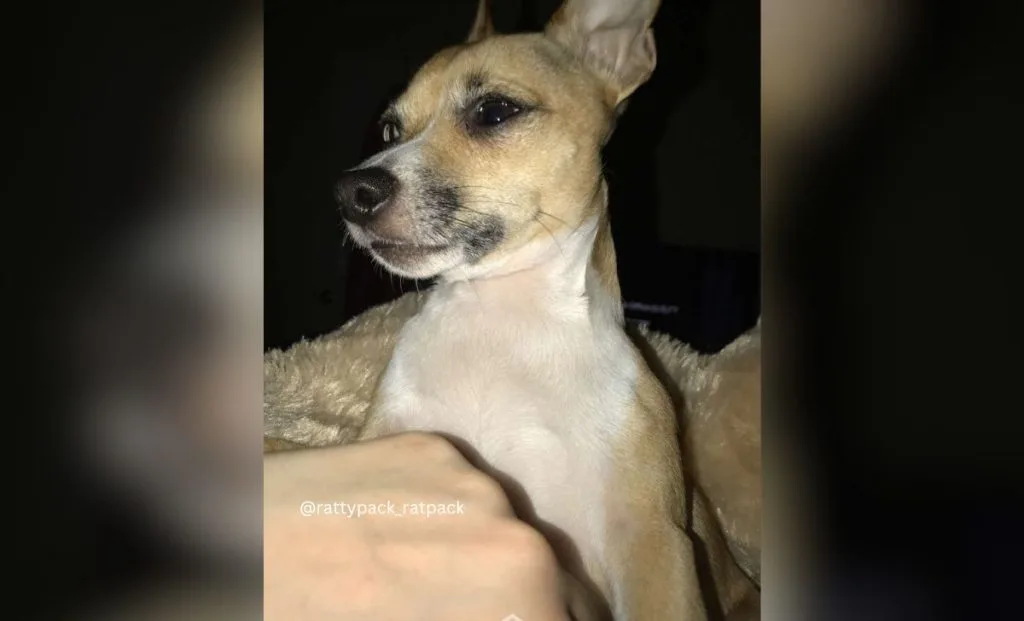
Lemon and apricot are two colors that are often mixed up, and it’s easy to see why.
However, the lemon shade is caused by entirely different genes, and it isn’t caused by dilution. As a result, white and lemon Rat Terrier’s nose will remain black instead of brown.
This is also the easiest way to differentiate the two.
16. White And Red Rat Terrier
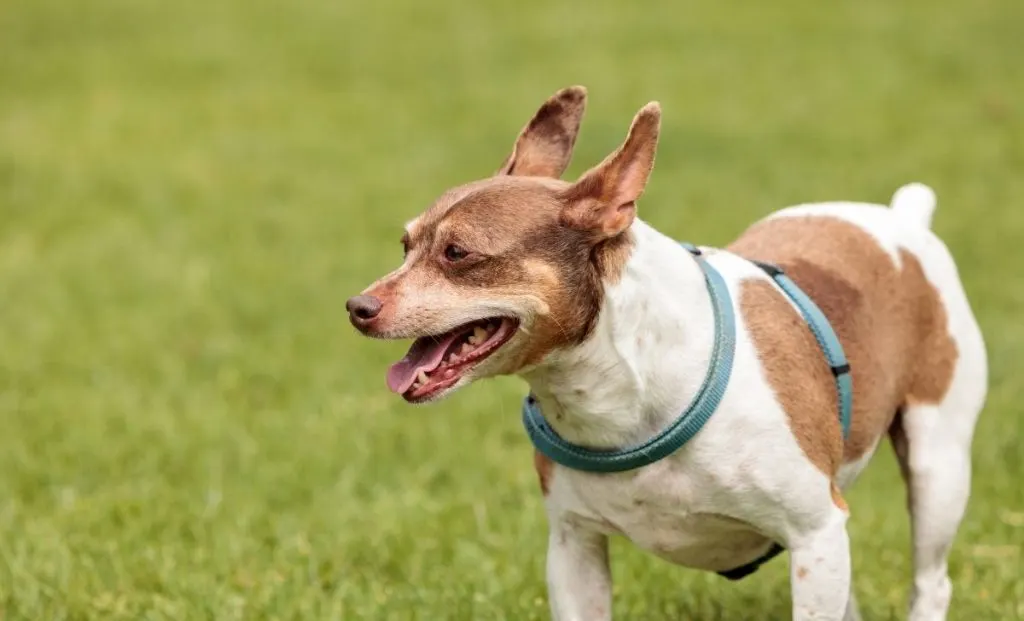
White and red Rat Terriers have a white base coat with red markings on them.
While some might confuse them with the white and chocolate color, red pups have black noses and dark eyes.
This is another common coat combination in these pups, and most breeders will sell white and red Rat Terrier puppies.
17. White And Tan Rat Terrier
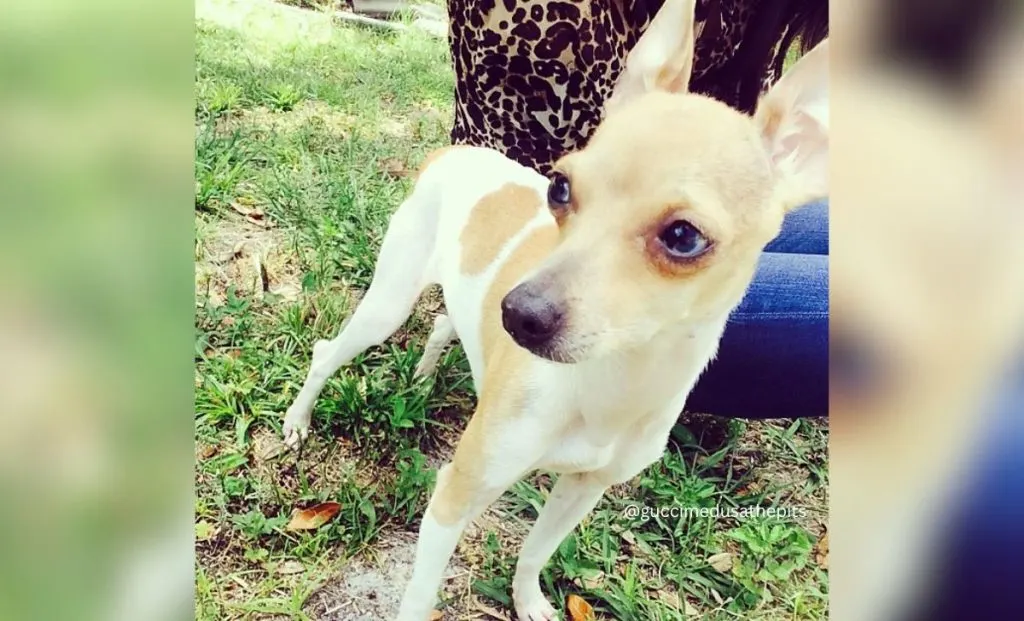
You’re not seeing double. White and tan and white and red dogs are that similar.
The only visible distinctness is that the colored part in white and tan Rat Terriers is a bit duller than in white and red dogs.
Although they look very similar, red and tan are caused by entirely different genes, so they are considered two different colors.
18. White And Silver Rat Terrier

These adorable little doggies look quite similar to white and blue dogs. However, as silver is not caused by the dilution gene, these pups have black noses and dark eyes.
You can see that the silver in these pups is pretty different from light silver in some other dog breeds. At first glance, it might resemble silver in Lhasa Apsos but without all the grizzle.
19. Brindle Rat Terrier

Do you know those dogs with tiger-like stripes? That is the color brindle, and it can appear on most base coats.
Brindle is not a color normally found in Rat Terriers, but some breeders are still selling these pups. These Rat Terriers are the product of crossbreeding dogs with known genes for brindle, such as Chihuahuas.
Yes, your brindle Rat Terrier can likely be a Chihuahua mix!
Brindle isn’t likely to cover your pup’s entire coat and will only stick to the colored parts, such as tan markings. However, considering how this pup is a crossbred, almost anything is possible!
20. Blanket-back Rat Terrier

A dog is a blanket-back when the black marking extends over the dog’s hind legs, giving it the appearance of being covered in a blanket.
This is quite a common marking in some breeds, such as German Shepherds, but also in Rat Terriers.
Surprisingly, blanket-back Rat Terriers are accepted by the AKC, considering how this pattern is frowned upon in most breeds.
21. Merle Rat Terrier
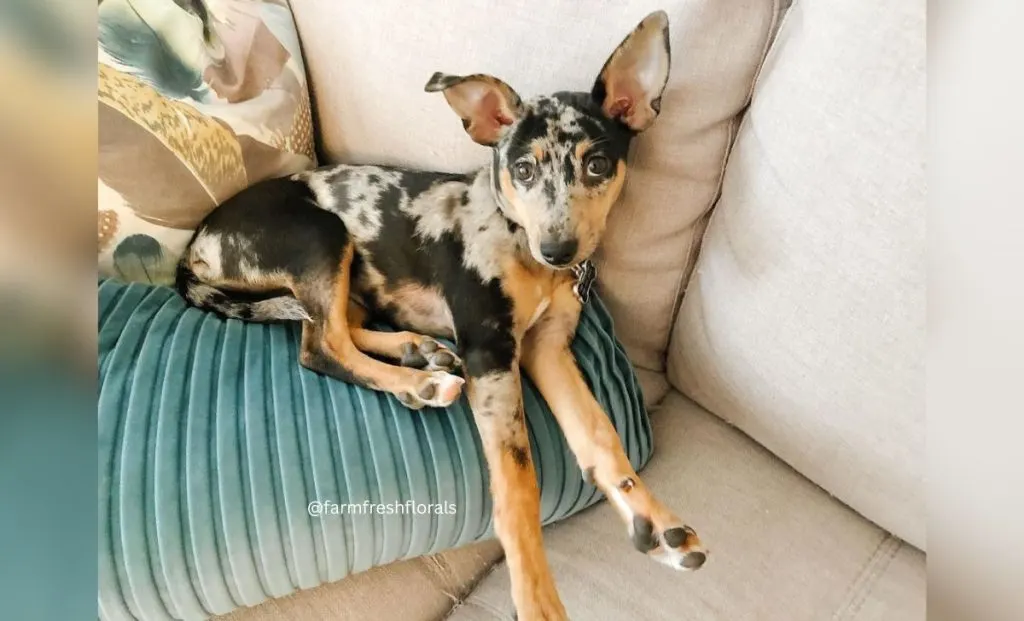
Merle is one of the most controversial colors in the dog world. It is caused by a merle dilution gene, a gene that causes partial dilution and is responsible for the mottled pattern these pups have.
Rat Terriers can come in four merle varieties:
- Blue merle
- Black merle
- Pearl merle
- Chocolate merle
Blue merle, also known as the true merle, are dogs with a white base coat and black and blue speckles all over their bodies. They also have a blue nose, something that is pretty standard for most merle dogs.
Black merle is not considered a true merle pattern, as these pups still have black noses.
Chocolate merles are dogs with a merle pattern but a liver nose.
Pearl merles are the most unique of all, as this shade is the product of diluting a black coat color and mixing it with a liver-colored coat.
As only the black color is affected in all these varieties, any red or tan markings will remain the same color, giving the pup an even more unique appearance.
Heterochromia or odd-colored eyes are also quite common in this pattern.
While the merle pattern isn’t complicated on its own, if the dog inherits the merle gene from both of its parents, its health can be compromised. Double merles are known to have a higher chance of developing health problems, such as deafness, blindness, and heart problems.
Not only that, but merle is not naturally found in Rat Terriers. If a pup has this color, he is most likely crossbred.
What a shame. Look at how beautiful these dogs are!
Does Color Matter?
If you’re looking to buy a new pet, it’s expected that you’d want a dog that you find cute. Still, are looks and, more importantly, color important for something, or is everything only the aesthetics?
There are some misconceptions that a coat color can affect a dog’s personality. This isn’t exactly the case. A dog’s personality and temperament depend on many factors, but coat color isn’t one of them.
However, if you see one of the “unique and rare” colors that aren’t accepted by any major kennel club, chances are you are looking at a mutt.
There is nothing wrong with crossbreeds. However, if you get a mixed-breed dog without realizing it, you might find your pup has some personality traits you weren’t expecting. This can result in you not being able to provide your new pooch with proper care.
Similarly, as you might’ve noticed, some coat colors are connected with certain genetic health problems.
As such, I would always advise you to stick to Rat Terrier colors that have been recognized by the AKC or your local kennel club. This will be a sign that you’re getting a purebred, healthy dog that was produced through a proper breeding program and that will be with you for a long time.
Other than that, you should always choose a dog that you think is adorable. Although, with Rat Terriers, this really isn’t an issue. Aren’t all of them so adorable?
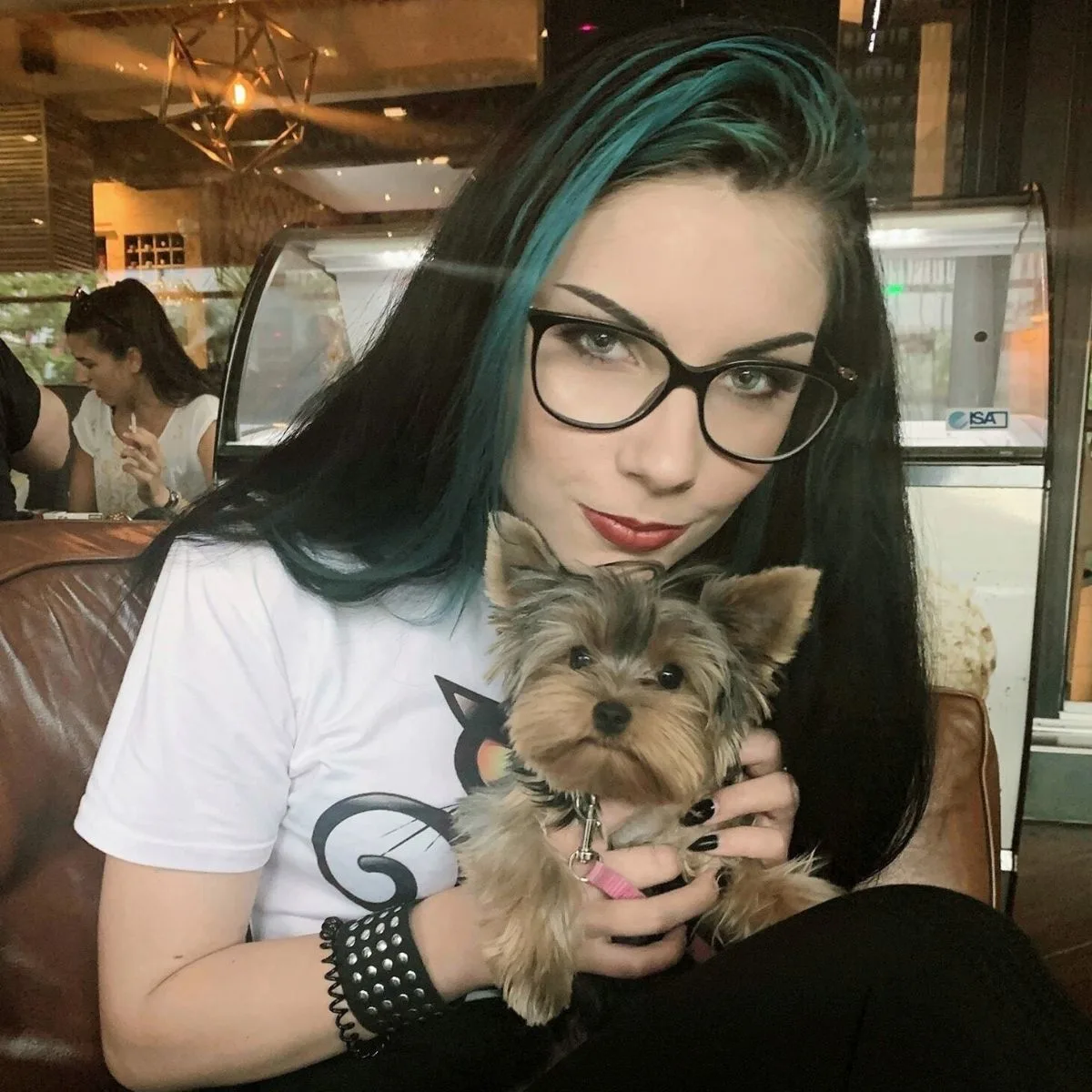
Vanja’s passion for writing started at an early age, which is why she pursued Journalism as her college degree. She can research any topic and find all the information before you bat an eye, which is a great thing for her job but a terrible one for her husband.
Even as a young child, she fell in love with everything fluffy – but dogs have a special place in her heart due to her childhood companion, a Corgie named Archie.
Motivated by her experiences and driven by a desire to give back to her four-legged companions, she spends her free time volunteering at a local dog shelter.
